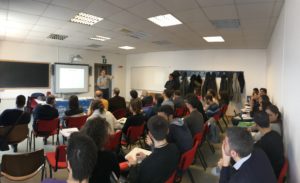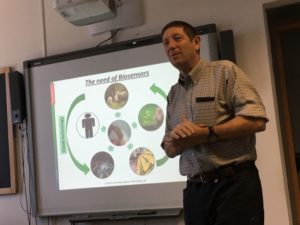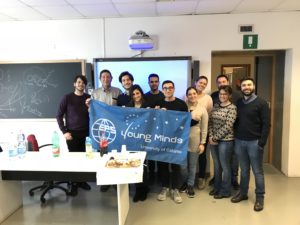Students choose university courses mostly upon what they like, but rarely they know what truly means working in a particular area. This is true both for research and industry. There are informative initiatives, but we realised that students want to know about the decision progress older collegues have taken, maybe only a couple of year before them. Then, we organize “Young to Young” (Y2Y) meetings in order to let young speakers tell young students why they decided to start a PhD or to be enrolled by a company or which was their thesis project, presenting their whole experience.
The first Y2Y meeting was presented by Dr. Riccardo Giovanni Urso, graduated at the University of Catania in Science Materials and Nanotechnology. He focused on the fact that his research project concerned the formation of materials in space that led to the origin of life, an interdisciplinary path that gave him the right enthusiasm. He described his work, his results and how he learned from all people he came in contact. At the end, there was time dedicated to questions by students.
Undergraduate students and early master’s students were the target of this meeting. We were able to attract an audience of about 30 people.
We asked all participants to fill a survey. Feedbacks are clear: they appreciated this initiative and all of them will participate next meetings. They also appreciated the fact that a young person was spoke to them. Finally, we need to improve the advertising to reach more students and attract them.


![report_famelab_6[1]](http://www.epsyoungminds.org/wp-content/uploads/2018/04/report_famelab_61-300x200.jpg)
![report_famelab_5[1]](http://www.epsyoungminds.org/wp-content/uploads/2018/04/report_famelab_51-300x225.jpg)
![report_famelab_4[1]](http://www.epsyoungminds.org/wp-content/uploads/2018/04/report_famelab_41-225x300.jpg)
![report_famelab_3[1]](http://www.epsyoungminds.org/wp-content/uploads/2018/04/report_famelab_31-169x300.jpg)
![report_famelab_2[1]](http://www.epsyoungminds.org/wp-content/uploads/2018/04/report_famelab_21-225x300.jpg)


